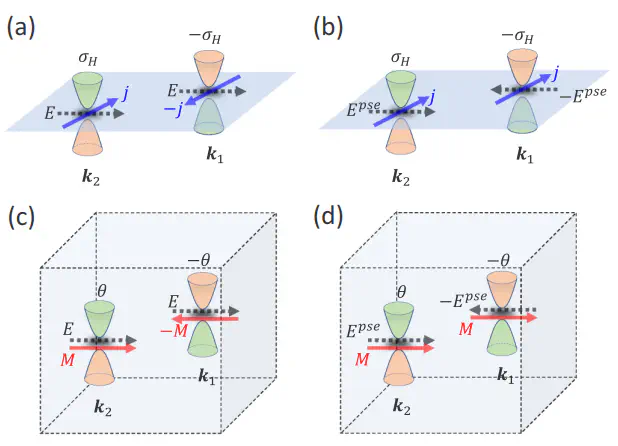Dynamical piezomagnetic effect in time-reversal-invariant Weyl semimetals with axionic charge density waves

Abstract
Charge density waves (CDWs) in Weyl semimetals (WSMs) have been shown to induce an exotic axionic insulating phase in which the sliding mode (phason) of the CDW acts as a dynamical axion field, giving rise to a large positive magnetoconductance [Wang et al., Phys. Rev. B 87, 161107(R) (2013); Roy et al., Phys. Rev. B 92, 125141 (2015); J. Gooth et al., Nature (London) 575, 315 (2019)]. In this work, we predict that dynamical strain can induce a bulk orbital magnetization in time-reversal (TR)-invariant WSMs that are gapped by a CDW. We term this effect the “dynamical piezomagnetic effect” (DPME). Unlike in J. Gooth et al. [Nature (London) 575, 315 (2019)], the DPME introduced in this work occurs in a bulk-constant (i.e., static and spatially homogeneous in the bulk) CDW, and does not rely on fluctuations, such as a phason. By studying the low-energy effective theory and a minimal tight-binding (TB) model, we find that the DPME originates from an effective valley axion field that couples the electromagnetic gauge field with a strain-induced pseudogauge field. In particular, whereas the piezoelectric effects studied in previous works are characterized by 2D Berry curvature, the DPME represents the first example of a fundamentally 3D strain effect originating from the Chern-Simons 3-form. We further find that the DPME has a discontinuous change at a critical value of the phase of the CDW order parameter. We demonstrate that, when there is a jump in the DPME, the surface of the system undergoes a topological quantum phase transition (TQPT), while the bulk remains gapped. Hence, the DPME provides a bulk signature of the boundary TQPT in a TR-invariant Weyl CDW.